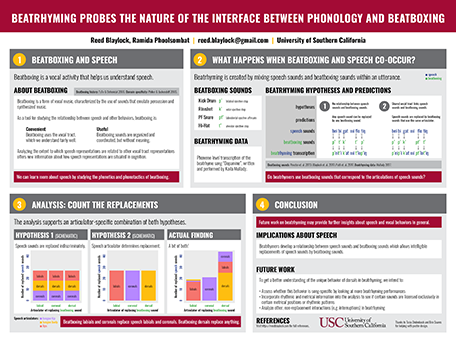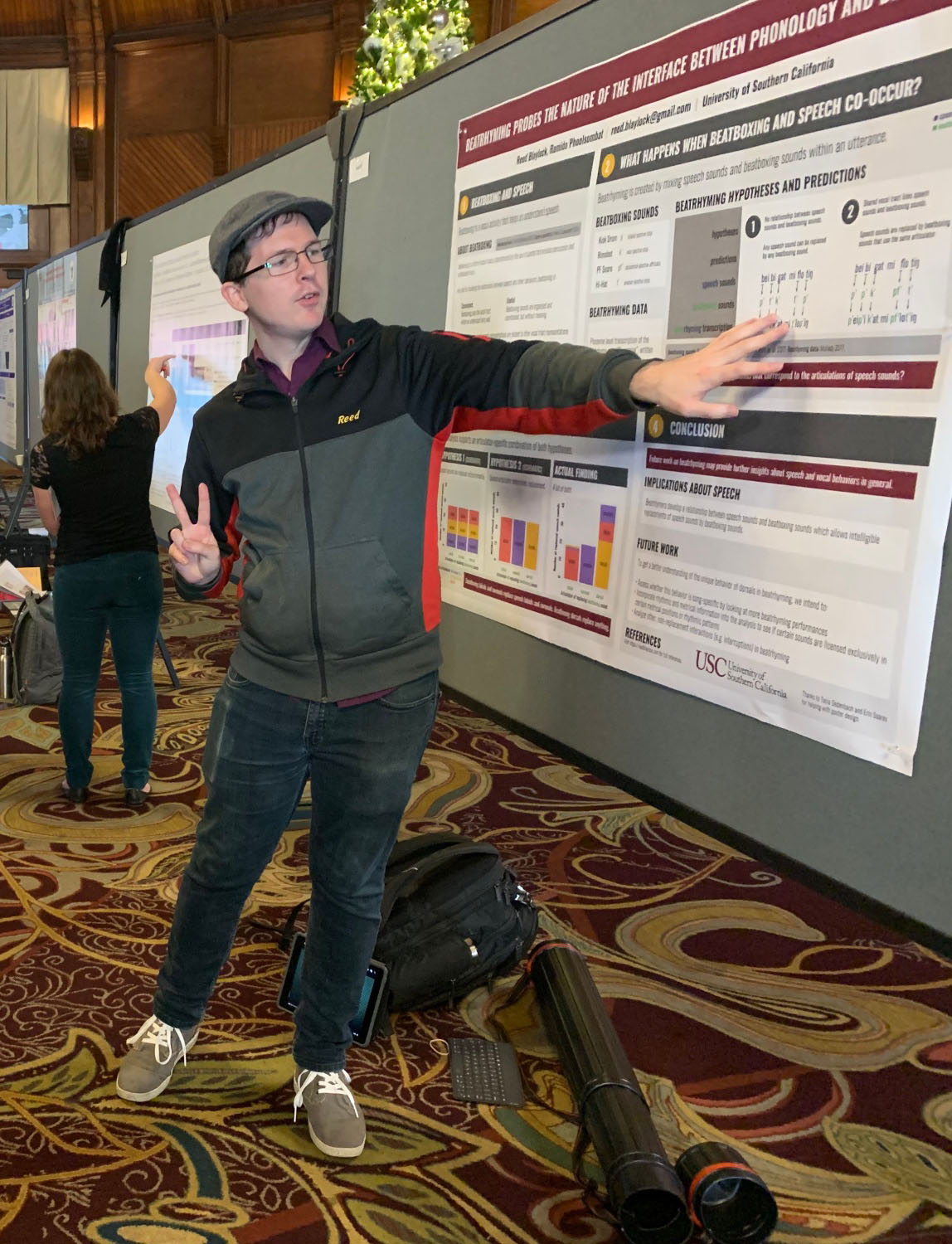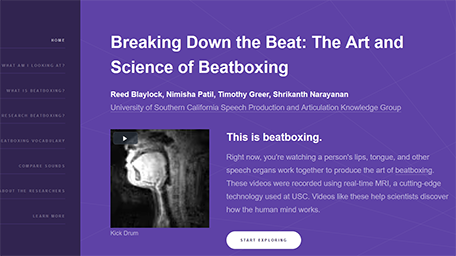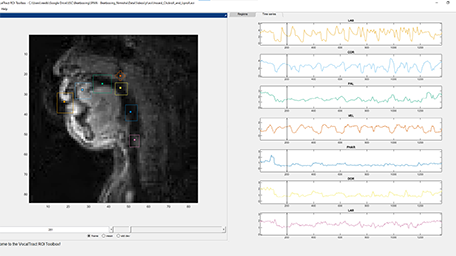Beatboxing
Beatboxing is a percussive style of vocal music that began with the birth of hip hop. Comparing beatboxing to speech helps us understand why speech uses relatively few of the possible sounds the mouth can make. It also highlights which aspects of language phonology are specialized for speech and which aspects are more general.
I began studying beatboxing in 2016 under the guidance of Shri Narayanan and the SPAN group and in collaboration with Nimisha Patil, multi-year winner of the Best Beatboxer Award at ICCAs and Anahat. We were soon joined by Timothy Greer and Asterios Toutios. Our research focused on the phonetic analysis of real-time magnetic resonance videos (real-time MRI) of five beatboxers: two novices, two experts, and a beatboxer of intermediate skill. My dissertation extends this work by investigating beatboxing articulatory phonetics (how the vocal tract articulators move to create beatboxing sounds) and beatboxing phonology (the fundamental cognitive units of beatboxing and their organization, in the vein of Articulatory Phonology).
Caleb Blumenfeld and I wrote a SciComm article explaining the role of airstream mechanisms in beatboxing sounds. We hope it will be a good resource for beatboxers!
Singing
Singers need precise control over their vocal tract to consistently achieve aesthetically appropriate pitches or sound qualities. To sing words in this way requires balancing communicative goals and aesthetic musical goals that may seem at odds with each other. Measuring how singers adapt speech sounds to a musical context reveals more about the inherent flexibility of the fundamental units of language.
I have previously investigated the articulation of singing using real-time MRI videos of trained Western tonal (i.e., opera and musical theatre) singers collected by the USC SPAN group. I presented some of this work at a Meeting of the Acoustical Society of the America in 2017 and at the 12th International Seminar on Speech Production (ISSP) in 2020.
Beatrhyming
Beatrhyming is the simultaneous production of beatboxing and speech (e.g., singing or rapping) by a single individual. Expert beatrhymers seamlessly interweave speech and beatboxing sounds to create music, showing that speech can interact collaboratively with other behaviors even at the level of their smallest units.
I've researched beatrhyming in collaboration with Ramida Phoolsombat from USC and separately with Masaki Fukuda, Kousei Kimura, and Seunghun Lee from International Christian University in Tokyo. Ramida and I won the 1st place Best Student Paper Award at the 2019 meeting of the Acoustical Society of America in San Diego for our poster "Beatrhyming probes the nature of the interface between phonology and beatboxing".

Ramida and I published a follow-up paper with expert beatrhymer Kaila Mullady in 2023 about how Kaila manages the interaction of speech and beatboxing in a case study performance. Take a look to learn how "Speech and beatboxing cooperate and compromise in beatrhyming".
There are many approaches to creating measurements from real-time MRI videos, but my first step is usually the region of interest (ROI) technique. Tracking the frame-by-frame changes of pixel intensity inside a region of the vocal tract provides a kinematic time series (an spatio-temporal estimate of vocal constrictions) that can be used for analyses of timing and constriction degree during vocal action. It's quick and relatively simple, making it great for both initial data exploration and rigorous analysis.
When I met Adam Lammert in my first year at USC, he had already written about the utility of the region of interest technique for different types of real-time MRI analysis. Adam kindly shared his code with me, and over the next eight years I wrapped it up into a graphical user interface called the VocalTract ROI Toolbox" that makes real-time MRI analysis easy for everyone. (Or at least, for everyone who has access to Matlab.) Recent releases also include a version of Miran Oh's related Automatic Centroid Tracking technique.
Scholarship of Teaching and Learning
Since 2019 I have been a member of the LSA's Faculty Learning Community (FLC) on the Scholarship of Teaching and Learning (SoTL) in linguistics. The FLC was formed by Dr. Kazuko Hiramatsu and Dr. Michal Temkin Martinez to increase the availability and quality of SoTL-related materials in the field of linguistics, leading to better pedagogical outcomes in K-12 and higher education. The SoTL-related materials—including curated resources for a webpage on scholarly teaching in linguistics and a special session for the 2021 LSA Annual Meeting—are created with an emphasis on inclusivity, mentoring, networking, and pedagogical development. In July 2023, the FLC put on the Conference on Scholarly Teaching and SoTL in Linguistics (CoSTaSiL) at UMass Amherst.
I have two proceedings papers from the LSA 2021 Annual Meeting's Special Session on Scholarly Teaching. The first, "From 'Hello, World!' to Fourier Transform: Teaching Linguistics Undergraduates to Code in 10 Weeks or Less", reports on my expierience using Backward Design to scaffold a series of progressive coding assignments that guide coding novices from the basics of programming (printing "Hello, World!") to a practical application (e.g., an approximation of a Fourier transform). The second, "Emergency Remote Teaching in Linguistics: LSA COVID-19 Survey and Results" with Ann Bunger, Evan Bradley, and Taylor Sharp, analyzes responses to the FLC's survey on the shift to emergency remote teaching during the COVID-19 pandemic.



